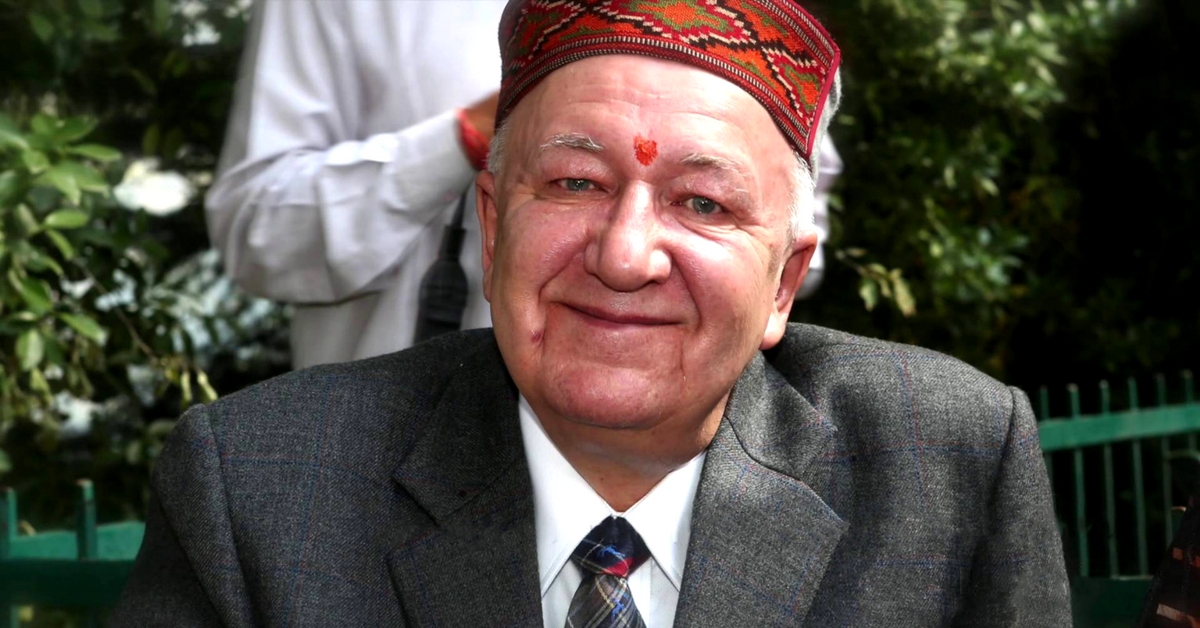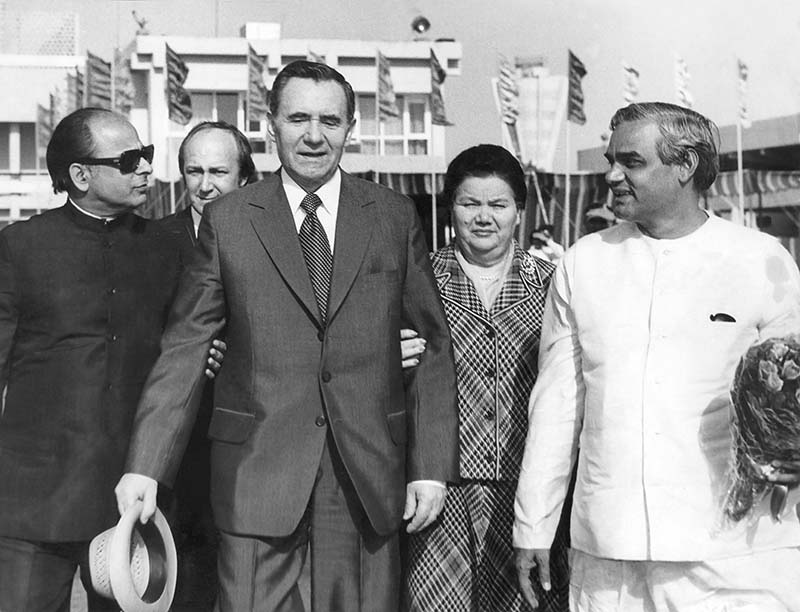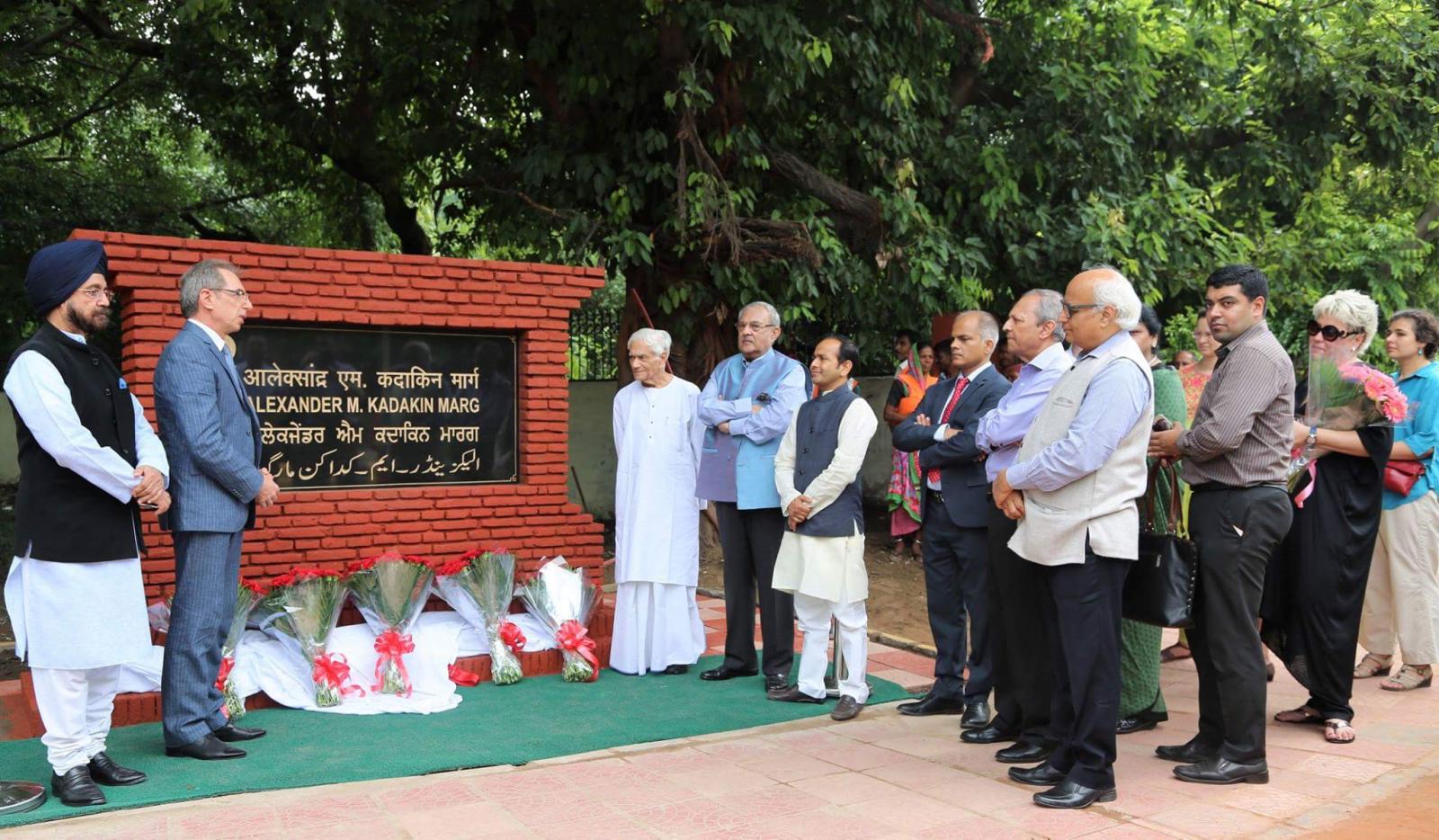Why India Just Honoured A Russian Ambassador With The Padma Bhushan
A man who loved India deeply, Russian Ambassador Alexander Mikhailovich Kadakin has just been posthumously honoured with the Padma Bhushan, India's third highest civilian award.

The year was 1971 and India’s relations with the Soviet Union had burgeoned into their strategic peak. On August 9, New Delhi signed the Indo-Soviet Treaty of Peace, Friendship and Cooperation, a unique document that not only epitomised the special relationship between India and the then USSR but also held immense importance at a time when war clouds were already gathering in the subcontinent
On the same day the treaty was signed, a 22-year-old Russian diplomat landed in Delhi. The man was Alexander Mikhailovich Kadakin and he would go on to be posthumously honoured by the Padma Bhushan, India’s third highest civilian award.

The last of the original ‘Indophile’ diplomats, Kadakin (or Sasha, as he was known to most) served in India through most of the important events in both his own country and his adopted one.
As mentioned earlier, he first came to India as a junior diplomat in the USSR embassy in Delhi just ahead of the signing of the Indo-Soviet Friendship and Cooperation Treaty
“It was a memorable event and I remember the exact date when I first landed in India. The rainy August 9, 1971, when Andrey Gromyko and Swaran Singh signed the historic Soviet-Indian Treaty. Was it an omen? I thought it was a blessing.
And never I regretted in the next 42 years that my destiny would closely intertwine with this country. If I had another chance, would I choose the same fate? The answer is positive. It was kismet (fate)”, the fluent Hindi-speaking diplomat would later recall while talking to an audience in Delhi.
In the years following his arrival in the country, Kadakin made India his second home. Unsurprising, since he had been drawn to everything Indian from a young age. He was a fan of Raj Kapoor films (immensely popular in the post-war Soviet Union) and had grown up reading the Panchatantra, Hitopadesha and Jawaharlal Nehru’s Discovery of India.
This affinity for India was also why he decided to become a ‘student of India’ at the Moscow State Institute of International Relationships university (MGMIO), an academic institution run by the Soviet Ministry of Foreign Affairs. Soon after, he was recruited by the ministry and arrived in India as a probationer at the Russian embassy.
Knowledgeable about India and fluent in Hindi, Kadakin’s job at the embassy included accompanying the Russian ambassador to his meetings with Prime Minister Indira Gandhi. In fact, such was his mastery over Hindi, Indian politics and society, that he was often mistaken for an Indian diplomat of Russian origin.

However, Hindi and geopolitics were not his only forte. Fluent in English, Urdu, Romanian and French, Kadakin had mastered quite a few classic Bollywood songs and could hum them with ease.
In his leisure time, the aspiring diplomat spent his hours exploring the many wonders of the Indian capital. He especially enjoyed indulging in samosas from Chandni Chowk and sweets from the Bengali market accompanied by countless cups of chai.
Kadakin was also an ardent admirer of the kurta pyjamas and could often be found sporting them with elan.
“Out of Indian clothes, the kurta pajama is, of course, dearest to me. At one time, when I was still a student-trainee, I wore it regularly. It is, of course, the greatest invention of the Indian mind, and much more. It is indispensable for hot weather, absolutely universal.
Of the ‘heavier’ varieties, I like the achkan, which Jawaharlal Nehru always wore. The most important thing in Indian wear is practicality – which is always fashionable,” he once told Russia Beyond.

After this challenging stint at the Russian embassy (which included a four-year term as the deputy chief of mission), Kadakin got his first ambassadorial position to the Himalayan nation of Nepal where he served from 1993 to 1997.
It was in 1999 that he finally became the Russian ambassador to India. Interestingly, he would go on to occupy the prestigious post twice — first, during from 1999 to 2004 and again from 2009 until his death in 2017. In between, he was Russia’s envoy to Sweden.
It was during Kadakin’s first tenure that Indo-Russian ties were formally elevated ties to a ‘strategic partnership’. In his second term, he helmed a transformation in the bilateral relationship, with a new generation of leadership taking over in both Moscow and New Delhi.
As such, the witty and plain-speaking diplomat saw it all: from the warmth of Indo-Soviet ties during the Cold War period to the launch of the Indo-Russian annual summit from 2000, the first of such exercises for India.
Kadakin also formed deep bonds with members of not just the polite diplomatic circles, but also India’s entire political spectrum, from Swaran Singh and Indira Gandhi to Atal Bihari Vajpayee and now Narendra Modi.

Incredibly, Kadakin batted for India as much as he did for Russia, being the rare diplomat who could see issues from both prisms and have the conviction to defend them. During his visits to Russia, he would take on the role of Hindi interpreter for any summit or visit by a leader from India, besides being an adviser to the Russian government on India.
This can be seen from the fact that, notwithstanding Russia’s growing closeness to Pakistan, he didn’t shy away from clearly holding Pakistan responsible for large-scale terrorism. In an interview with CNN-News18 after India’s surgical strikes against terror launchpads across the Line of Control, he had called upon Pakistan to stop cross-border terrorism, saying,
“The greatest human rights violations take place when terrorists attack military installations and attack peaceful civilians in India. We welcome the surgical strike. Every country has right to defend itself.”

As such, few would disagree that Kadakin’s immense passion for further improvement in Indo-Russian ties formed the core of his illustrious 45-year long diplomatic career. His own words (from a speech in 2013) are, perhaps, the most appropriate one to describe his life-long love for India.
“The other day, in Darjeeling, an idea struck my mind that the discovery of India is like scaling a Himalayan summit. The higher one ascends, the more the horizon broadens, and only at the top the breath-taking panorama unfolds in a short-lived drama of the morning. India has entered my life as a second homeland.
It has become my karma-bhumi, because I worked here for so many years, my gnyana-bhumi, because I have learnt a lot here, my tapa-bhumi (especially in the hot season), but most importantly – my prem– and maitri-bhumi, because I have given a half of my heart to India. And because me personally and the new Russia, which I have the honour to represent as Ambassador for the second time, have millions of good friends here”, said Kadakin.
India’s longest serving foreign diplomat, Alexander Kadakin passed away on January 25, 2017, at the age of 67. As a spokesperson from the Indian foreign ministry tweeted after his death, “India had lost a dear friend.”

As a tribute to the eminent diplomat, in June 2017, the Indian government announced that a street in Delhi would be named after Kadakin.
Its recent decision to honour him with the Padma Bhushan is yet another acknowledgement that the warm-hearted Russian and his immense love for India will never be forgotten.
Like this story? Or have something to share? Write to us: [email protected], or connect with us on Facebook and Twitter.
NEW: Click here to get positive news on WhatsApp!
If you found our stories insightful, informative, or even just enjoyable, we invite you to consider making a voluntary payment to support the work we do at The Better India. Your contribution helps us continue producing quality content that educates, inspires, and drives positive change.
Choose one of the payment options below for your contribution-
By paying for the stories you value, you directly contribute to sustaining our efforts focused on making a difference in the world. Together, let’s ensure that impactful stories continue to be told and shared, enriching lives and communities alike.
Thank you for your support. Here are some frequently asked questions you might find helpful to know why you are contributing?


This story made me
-
97
-
121
-
89
-
167













